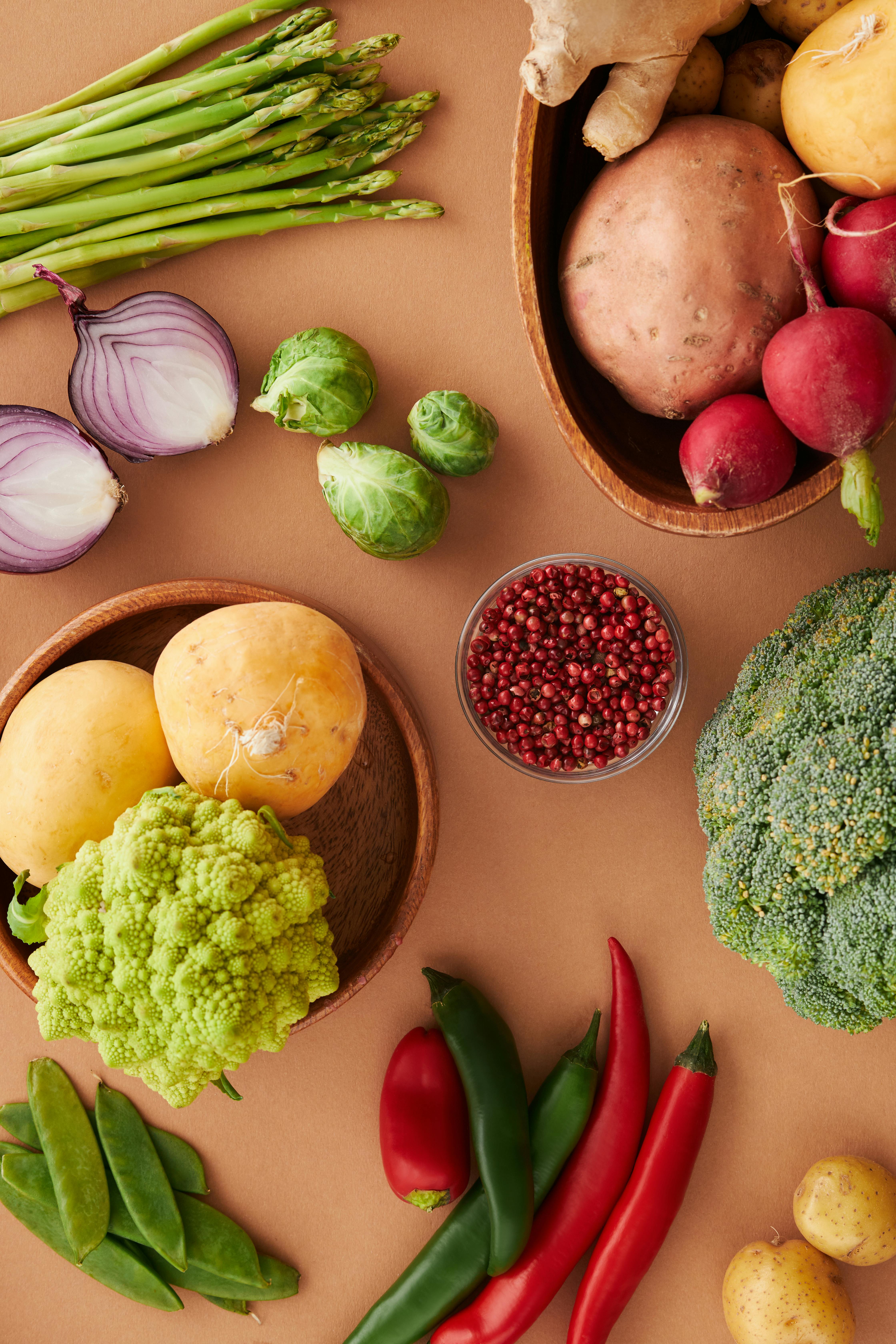Organic Food Unveiled: Crack the Code and Shop Smart
Learn the difference between inorganic and organic foods and how to shop for them.

A primary care membership for patients who want more. Primary Care. Nutrition. Wellness. All under one roof.
In a world where health-conscious consumers are increasingly concerned about the quality and origin of their food, the demand for organic products has soared. The term "organic" has become a buzzword, but do we truly understand what it means? As discerning shoppers, it's crucial to distinguish between genuine organic food and clever marketing ploys. So, let’s explore the key indicators that help identify organic food and unravel the significance behind different organic seals.
Defining organic food
Organic food refers to agricultural produce grown and processed without the use of synthetic chemicals, genetically modified organisms (GMOs), irradiation, or sewage sludge. While organic meat, poultry, eggs, and dairy come from animals that are given no growth hormones or antibiotics. Instead, organic farming focuses on sustainable practices that promote soil and water conservation, biodiversity, and animal welfare. The absence of harmful pesticides, herbicides, and chemical fertilizers ensures a healthier and more environmentally friendly food system.
Inorganic vs. organic
The pesticide predicament
Synthetic pesticides, herbicides, and insecticides are often used when growing inorganic foods. These chemicals wage war against pests and weeds, but their residues can linger on your plate. Organic food, on the other hand, employs natural pest management methods such as crop rotation, physical barriers, companion planting, and natural pesticides.
Soil matters
Inorganic farming relies heavily on synthetic fertilizers to boost crop growth. While these fertilizers may yield impressive results, they can deplete the soil of its natural nutrients and disrupt the delicate balance of microorganisms. Organic farming, in contrast, nourishes the soil through composting and crop rotation while farming.
Genetic jousting
Inorganic foods may involve the use of genetically modified organisms (GMOs), where genetic material is manipulated to enhance desirable traits or improve crop resistance. However, GMOs come with their fair share of controversies and uncertainties regarding their long-term effects on health and the environment. Organic food, by its very nature, avoids the use of GMOs, offering a more natural and unaltered crop.
Environmental impact
Farming practices for inorganic foods often contribute to environmental degradation. Excessive use of synthetic chemicals can contaminate water sources, harm wildlife, and disrupt ecosystems. On the other hand, organic farming fosters biodiversity, promotes soil health, and reduces pollution. By choosing organic, you become an eco-warrior, fighting for a greener, cleaner planet.
Taste and nutrition
Many proponents of organic food argue that it offers superior taste and nutritional value compared to inorganic counterparts. While taste preferences can be subjective, some studies suggest that organic produce may have higher levels of certain nutrients and antioxidants. Additionally, the absence of synthetic additives and preservatives in organic food can provide a more authentic and wholesome flavor experience.
Let's break it down—organic food is the real deal. It's grown and processed without synthetic chemicals, GMOs, or weird stuff like sewage sludge. Instead, organic farming embraces sustainable practices, while also treating animals ethically.
Identifying organic food
We know it can be tricky to know which foods are really organic. To ensure the authenticity, look for these key indicators:
Organic certification
The most reliable way to determine if a product is genuinely organic is through organic certification. In many countries, government-regulated certifying agencies verify compliance with stringent organic standards. These certifications involve rigorous inspections, testing, and documentation to ensure that organic principles are upheld throughout the production process.
Organic seals
Organic seals, displayed prominently on product packaging, provide quick visual cues for consumers. While the appearance and wording of seals may vary, they generally indicate that the product has undergone organic certification. Familiarize yourself with the organic seals relevant to your region, such as USDA Organic (United States), EU Organic (European Union), or the Canada Organic logo.
Decoding different organic seals
USDA Organic (United States): The USDA Organic seal signifies compliance with the United States Department of Agriculture's National Organic Program (NOP). This seal ensures that at least 95% of the product's ingredients are organic, excluding water and salt. Additionally, the remaining 5% must be on the approved National List, which includes specific non-organic substances allowed in limited quantities.
EU Organic (European Union): The EU Organic seal, featuring a leafy green logo, confirms adherence to the organic regulations of the European Union. These regulations require that at least 95% of the product's agricultural ingredients are organic. The remaining 5% may include substances authorized by the EU organic legislation.
Canada Organic Logo: The Canada Organic logo indicates that the product is certified organic according to the Canadian Organic Standards. To bear this seal, the product must contain at least 95% organic content, with the remaining 5% comprising substances from the Permitted Substances List.
Additional Factors to Consider
Local and small-scale producers
While small-scale organic producers might not have certification due to financial constraints, their dedication to sustainable practices is often evident. Engage in conversations with local farmers at farmers' markets or participate in community-supported agriculture (CSA) programs to source high-quality organic food.
Product labeling
Organic claims on food packaging can be misleading. Be cautious of terms like "natural," "hormone-free," or "free-range," as they do not guarantee organic certification. Read ingredient lists and look for certified organic ingredients to ensure the authenticity of the product.
Non-GMO verification
Organic certification generally prohibits the use of genetically modified organisms (GMOs). While organic food is inherently non-GMO, products carrying additional non-GMO verification seals provide further assurance.
Conclusion
As conscious consumers, it is essential to navigate the complex landscape of organic food with confidence. Understanding organic principles, recognizing organic seals, and deciphering the different claims is an important step to making informed decisions that suit your health, values, and budget. Whether you buy inorganic or organic food it's important to know what is on your plate!
Source:
1. National Library of Medicine: https://www.ncbi.nlm.nih.gov/pmc/articles/PMC7019963/

If you're curious to learn more about The Lanby, book a free consult call and we'll chat about how The Lanby can be your personalized long term health and wellness partner.

Kendall is a graduate of the University of Mississippi, with a B.A. in Integrated Marketing Communications and a minor in Business Administration. She received her certificate of Nutrition Science from the Friedman School of Nutrition at Tufts University.

Chloe holds a bioengineering degree from the University of Pennsylvania. As a breast cancer survivor, her insights shape The Lanby's patient-centric approach. Leveraging her healthcare strategy background, Chloe pioneers concierge medicine, bridging gaps in primary care.

Tandice was recognized with the Health Law Award and named a Ruth Bader Ginsburg Scholar at Columbia Law School. Tandice's editorial role is enriched by her insights into patient autonomy and gene modification legalities. Passionate about bioethics, she is committed to crafting patient-centric healthcare solutions.





